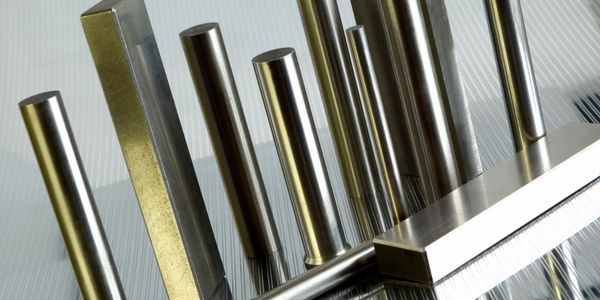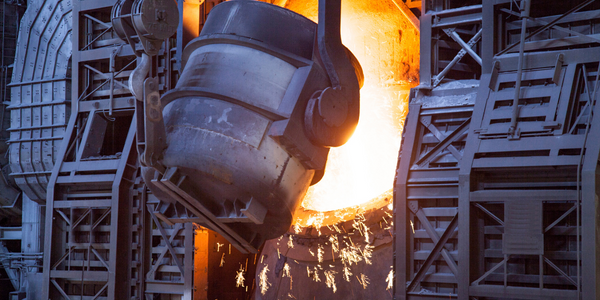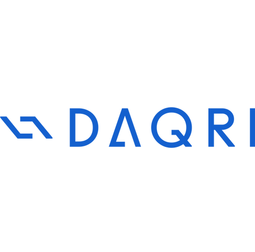Download PDF
KSP Steel Decentralized Control Room

Technology Category
- Wearables - Augmented Reality Glasses, Headsets & Controllers
Applicable Industries
- Metals
Applicable Functions
- Discrete Manufacturing
Use Cases
- Augmented Reality
The Challenge
While on-site in Pavlodar, Kazakhstan, the DAQRI team of Business Development and Solutions Architecture personnel worked closely with KSP Steel’s production leadership to understand the steel production process, operational challenges, and worker pain points.
The Customer
KSP Steel
About The Customer
KSP Steel, the first Kazakhstan Company producing steel seamless pipes for oil and gas sector, was founded in early 2007. Republic of Kazakhstan President Nursultan Nazarbayev attended the official opening of KSP Steel’s plant in the city of Pavlodar in D
The Solution
Employing DAQRI SMART HELMET™ and visual markers at process-observation points, KSP Steel engineers could access two new capabilities.
1. Just-in-place AR data visualization: Workers could safely access necessary information at the point of need, without wasted travel time or an interruption of situational awareness.
2. Portable Process Data: Workers can select an AR data visualization for a given observation point and pin it to their AR display, independent of the unique marker. This decouples the dependence on installed physical infrastructure and allows the user to safely take information with them, providing exponential improvements in process flexibility.
1. Just-in-place AR data visualization: Workers could safely access necessary information at the point of need, without wasted travel time or an interruption of situational awareness.
2. Portable Process Data: Workers can select an AR data visualization for a given observation point and pin it to their AR display, independent of the unique marker. This decouples the dependence on installed physical infrastructure and allows the user to safely take information with them, providing exponential improvements in process flexibility.
Operational Impact
Related Case Studies.

Case Study
Goldcorp: Internet of Things Enables the Mine of the Future
Goldcorp is committed to responsible mining practices and maintaining maximum safety for its workers. At the same time, the firm is constantly exploring ways to improve the efficiency of its operations, extend the life of its assets, and control costs. Goldcorp needed technology that can maximize production efficiency by tracking all mining operations, keep employees safe with remote operations and monitoring of hazardous work areas and control production costs through better asset and site management.

Case Study
Bluescope Steel on Path to Digitally Transform Operations and IT
Increasing competition and fluctuations in the construction market prompted BlueScope Steel to look toward digital transformation of its four businesses, including modern core applications and IT infrastructure. BlueScope needed to modernize its infrastructure and adopt new technologies to improve operations and supply chain efficiency while maintaining and updating an aging application portfolio.

Case Study
RobotStudio Case Study: Benteler Automobiltechnik
Benteler has a small pipe business area for which they produce fuel lines and coolant lines made of aluminum for Porsche and other car manufacturers. One of the problems in production was that when Benteler added new products, production had too much downtime.

Case Study
Continuous Casting Machines in a Steel Factory
With a very broad range of applications, steel is an important material and has been developed into the most extensive alloy in the engineering world. Since delivering high quality is absolutely crucial for steel plants, ensuring maximum productivity and the best quality production are the keys to competitiveness in the steel industry. Additionally, working conditions in steel factories are not suitable for workers to stay in for long periods of time, so manufactures usually adopt various machines to complete the steel production processes. However, the precision of these machines is often overestimated and the lack of flexibility also makes supervisors unable to adjust operating procedures. A renowned steel factory in Asia planned to improve its Distributed Control System (DCS) of furnaces as well as addressing the problem of insufficient accuracy. However, most well-known international equipment suppliers can not provide a satisfactory solution and local maintenance because the project needed new technologies to more accurately control equipment operations. By implementing Advantech’s automated monitoring and control solution, steel factories can not only improve the manufacturing processes but can also allow users to add additional functions to the existing system so as to make sure the operation runs at high efficiency.

Case Study
Automated Predicitive Analytics For Steel/Metals Industry
Asset to be monitored: Wire Compactor that produces Steel RebarCustomer Faced The Following Challenges:Dependent upon machine uptime.Pressure cylinders within the compactor fail to control compression and speed causing problems in binding the coil.Equipment failure occurs in the final stage of production causing the entire line to stop, can you say bottleneck?Critical asset unequipped with sensors to produce data.

Case Study
Mueller moves from preventive to predictive maintenance
Recognizing the recent advances in and affordability of predictive maintenance (PdM), the company decided to implement a PdM program in one of its facilities on a trial basis. Anticipating positive results, we hope to gradually pursue wider implementation.





